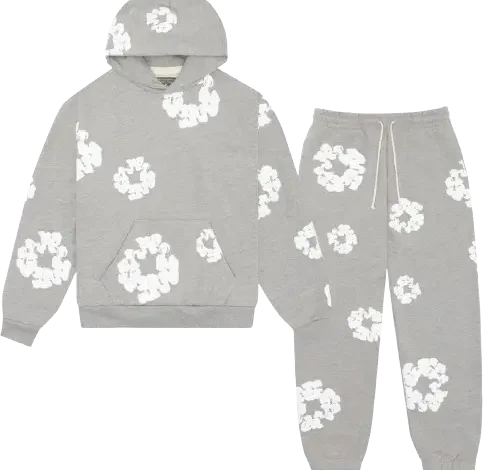
Denim Tears, founded by designer Tremaine Emory, is not just a clothing brand; it’s a cultural movement that speaks to the intersections of fashion, heritage, and social justice. The brand captures the essence of denim as a fabric and the narratives woven into it, creating a unique aesthetic that resonates with a diverse audience. This article explores the origins, philosophy, collections, and impact of Denim Tears in the fashion industry and beyond.
Table of Contents
ToggleThe Origins of Denim Tears
Tremaine Emory, a multifaceted creative with roots in streetwear and high fashion, launched Denim Tears in 2019. His background as a creative director, stylist, and brand consultant has significantly influenced the brand’s ethos. Emory’s work is marked by a deep appreciation for history, culture, and the narratives behind the garments we wear. The brand was born out of a desire to redefine denim’s cultural significance, particularly within the Black community.
Denim has long been a symbol of rebellion, work, and resistance. Emory sought to use this versatile fabric to tell stories that often go unheard, focusing on themes of heritage, identity, and the socio-political struggles faced by marginalized communities. Denim Tears encapsulates the spirit of hip-hop culture, blending it with high-end fashion sensibilities to create something fresh yet deeply rooted in history.
Philosophy and Aesthetic
At the core of Denim Tears is a philosophy that embraces authenticity and cultural representation. Emory believes that clothing should be more than just fashion; it should provoke thought and spark conversations. Denim Tears challenges conventional ideas about luxury and streetwear by merging the two, creating pieces that are both accessible and aspirational. The brand’s aesthetic is characterized by oversized silhouettes, bold graphics, and innovative designs, all while maintaining a connection to the roots of denim.
One of the most significant aspects of Denim Tears is its commitment to sustainability. Emory recognizes the environmental impact of the fashion industry and strives to create pieces that are not only stylish but also eco-conscious. This commitment is evident in the materials used and the production processes employed, which prioritize quality and longevity over fast fashion.
Signature Collections
Denim Tears has gained recognition for its distinct collections that blend storytelling with fashion. Each piece often reflects a deeper narrative, inviting consumers to engage with the brand on a personal level. Some notable collections include:
- “The Cotton Collection”: One of the brand’s most iconic lines, this collection addresses the historical context of cotton as a crop cultivated through the labor of enslaved people in the United States. The pieces feature embroidered motifs that pay homage to this history, serving as a reminder of the resilience and creativity of Black culture. By placing these narratives at the forefront, Denim Tears encourages a dialogue about history, identity, and healing.
- “Aerosol”: This collection showcases Emory’s passion for art and urban culture. Inspired by street art and graffiti, the pieces feature vibrant graphics that celebrate creativity and self-expression. By incorporating these elements, Denim Tears Jeans connects with the ethos of hip-hop culture while offering a fresh take on contemporary streetwear.
- Collaborations: Denim Tears has collaborated with established brands such as Nike, creating limited-edition pieces that reflect the brand’s core values while expanding its reach. These collaborations further emphasize the brand’s dedication to blending cultural significance with modern aesthetics, ensuring that each piece resonates with a broad audience.
Cultural Impact and Community Engagement
Denim Tears has made a significant impact not only in the fashion industry but also within the communities it represents. Emory’s focus on storytelling and cultural representation has resonated with consumers, creating a loyal following that appreciates the brand’s commitment to authenticity and social justice.
One of the most notable aspects of Denim Tears is its involvement in community engagement initiatives. Emory actively collaborates with artists, activists, and community organizations to raise awareness about social issues and promote positive change. The brand has used its platform to support various causes, including education, mental health awareness, and racial justice.
In 2020, amid the global protests against racial injustice, Denim Tears released a collection that donated proceeds to organizations advocating for Black lives. This move not only showcased the brand’s commitment to social change but also emphasized the power of fashion as a tool for activism.
The Future of Denim Tears
As Denim Tears continues to grow, its influence on the fashion landscape is undeniable. Emory’s vision of creating a brand that challenges traditional notions of luxury and celebrates cultural heritage is resonating with consumers. The brand has opened the door for conversations about inclusivity, representation, and the power of storytelling in fashion.
Looking ahead, Denim Tears is poised to expand its reach while staying true to its core values. With an increasing focus on sustainability, community engagement, and cultural representation, the brand aims to inspire a new generation of consumers who prioritize authenticity and social responsibility in their fashion choices.
Conclusion
Denim Tears Hoodie is more than just a clothing brand; it represents a movement that seeks to redefine the narratives surrounding denim and fashion as a whole. Tremaine Emory’s dedication to storytelling, cultural representation, and social justice sets Denim Tears apart in an industry often criticized for its lack of authenticity. Through its innovative designs and commitment to community engagement, Denim Tears has become a beacon of hope and inspiration for those seeking to express their identity and engage with the world around them. As the brand continues to evolve, its impact on fashion and culture will undoubtedly leave a lasting legacy.




